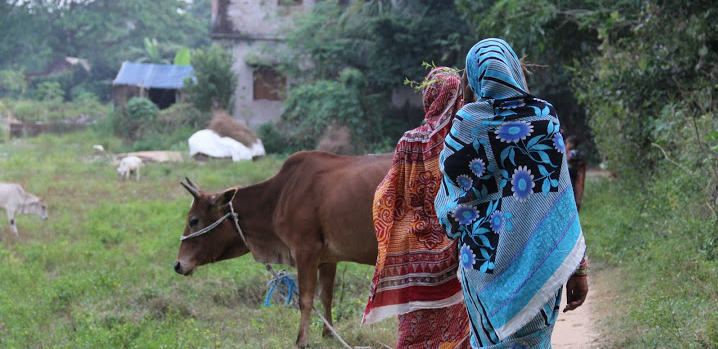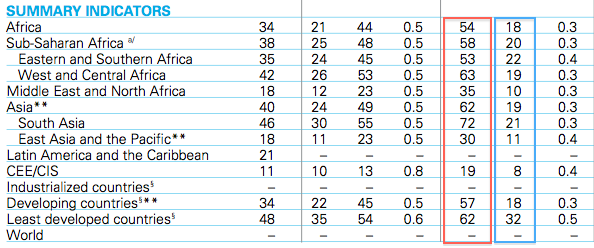

Despite the many efforts and programs in the developing world, girls are still largely disadvantaged. In general, they tend to have less access to education and fewer social and economic opportunities than their male counterparts.
One significant indicator of the well-being of adolescent girls is child marriage. While this is an issue that can also effect boys, it's impact on girls is hugely disproportionate.
Reasons for child marriage range from economic to social. In many cases, girls are married off at an early age to reduce the family’s financial burden. Not only is the family no longer responsible for another child, but they also may receive gifts from the husband or his family for her hand in marriage. In other cases, child marriage functions as nothing more than a social norm rooted in gender discrimination. Girls are perceived as less valuable and even expendable.
The following graph denotes the percentage of women ages 20 to 24 who were married before 18 between 2000 and 2008. The first column is the average per region, the red column is representative of the poorest 20%, and the blue column is representative of the richest 20%. The discrepancies between the richest and poorest are enormous -- as high as 51% in South Asia. This chart suggests that income and financial security must play a key role in the regularity of child marriages.

According to UNICEF, about one-third of women in the developing world aged 20 to 24 were married before the age of 18, and the issue is most prevalent in South Asia and Sub-Saharan Africa. Niger has the highest rate of child marriages in the world where a whopping 75% of girls are married before 18.

The ICRW has published a fascinating article on the relationship between child marriage and education. There is strong correlation between the education a girl receives and the age at which she will marry. For example, in Mozambique, 60% of girls with no education are married by 18, while only 10% of girls with secondary schooling, and a meager 1% of girls with a higher education are married as children.

Once young girls are married, domestic burdens like childbearing make access to education even more limited. Also, in many regions there are social norms that deem marriage and schooling incompatible.
Child marriage also has significant health repercussions. The younger women are married, the younger they tend to have children. This has the potential to seriously affect the health of both mothers and babies, especially if the mother is not done growing. Consider these facts published in UNICEF’s State of the World’s Children Report:
“If a mother is under the age of 18, her infant’s risk of dying in its first year of life is 60% greater than that of an infant born to a mother older than 19.”
“Girls who give birth before the age of 15 are five times more likely to die in childbirth than women in their twenties.”
Likewise, child marriage can have serious consequences on girls’ mental health, as it often means separation from family and friends and sometimes a lack of freedom to participate in community activities.
Educational, social, and economic opportunities that have the potential to lift a girl, her family, and her community out of poverty are lost when she is married as a child. And when women grow up in poverty, they are more likely to succumb to the same financial pressures and marry off their own daughters as children -- perpetuating the cycle.
Microfinance is one way to break this pattern. Providing affordable loans to both men and women gives them economic opportunities otherwise unavailable. Presumably, many families wouldn’t marry off their daughters as children if they were financially stable.
PREVIOUS ARTICLE
A Day in the Life of a Loan Officer: Comparing Honduras, Colombia and the United States →NEXT ARTICLE
Answers to your questions from the Kiva Insights Call →













